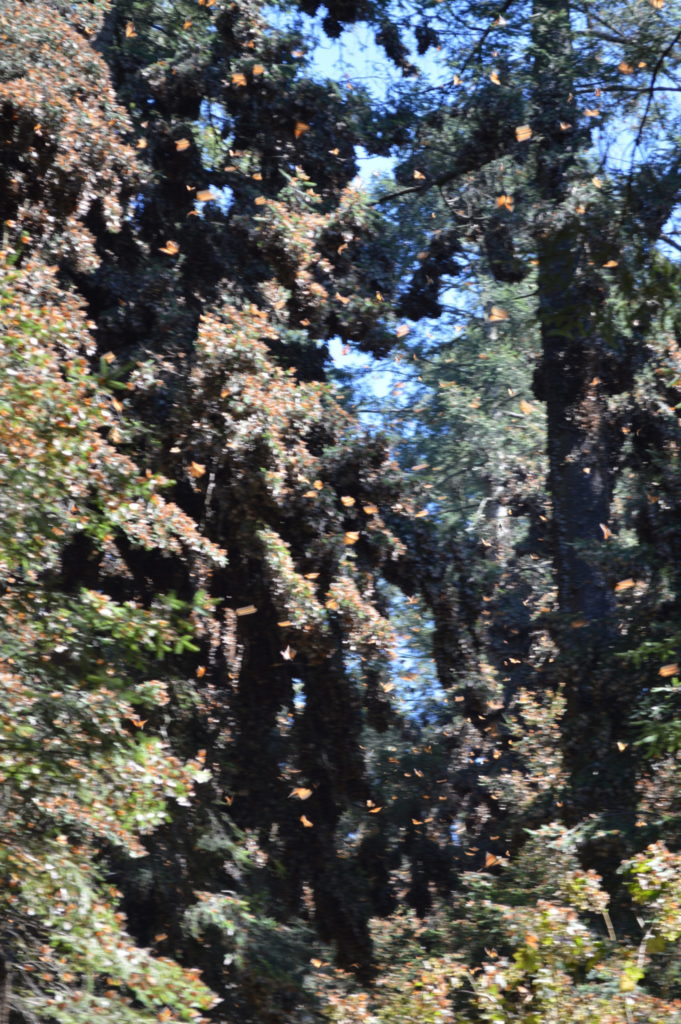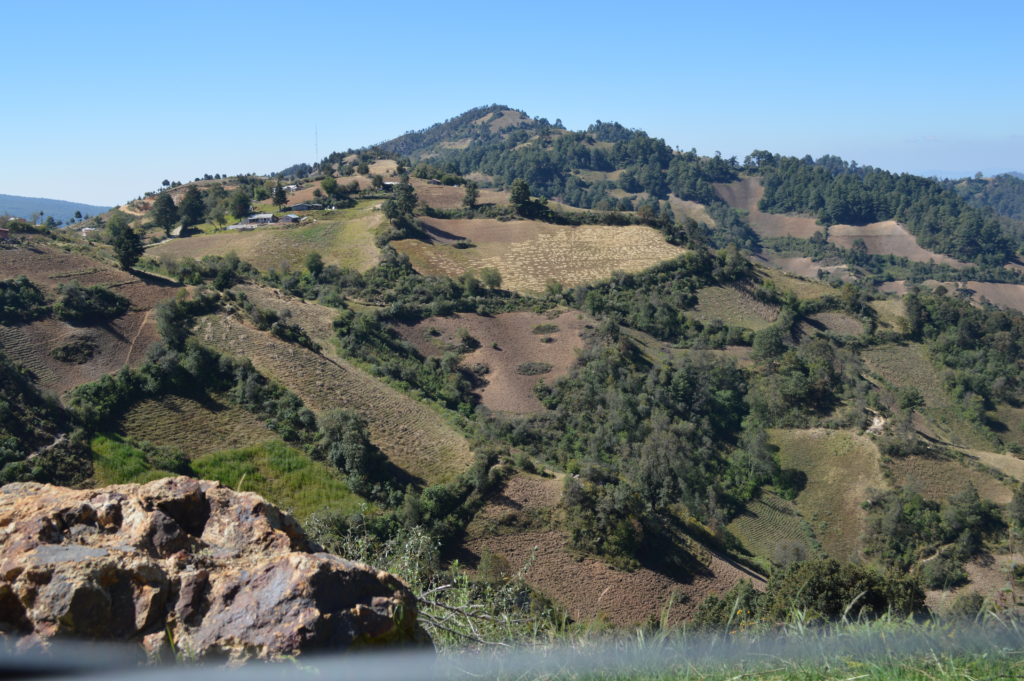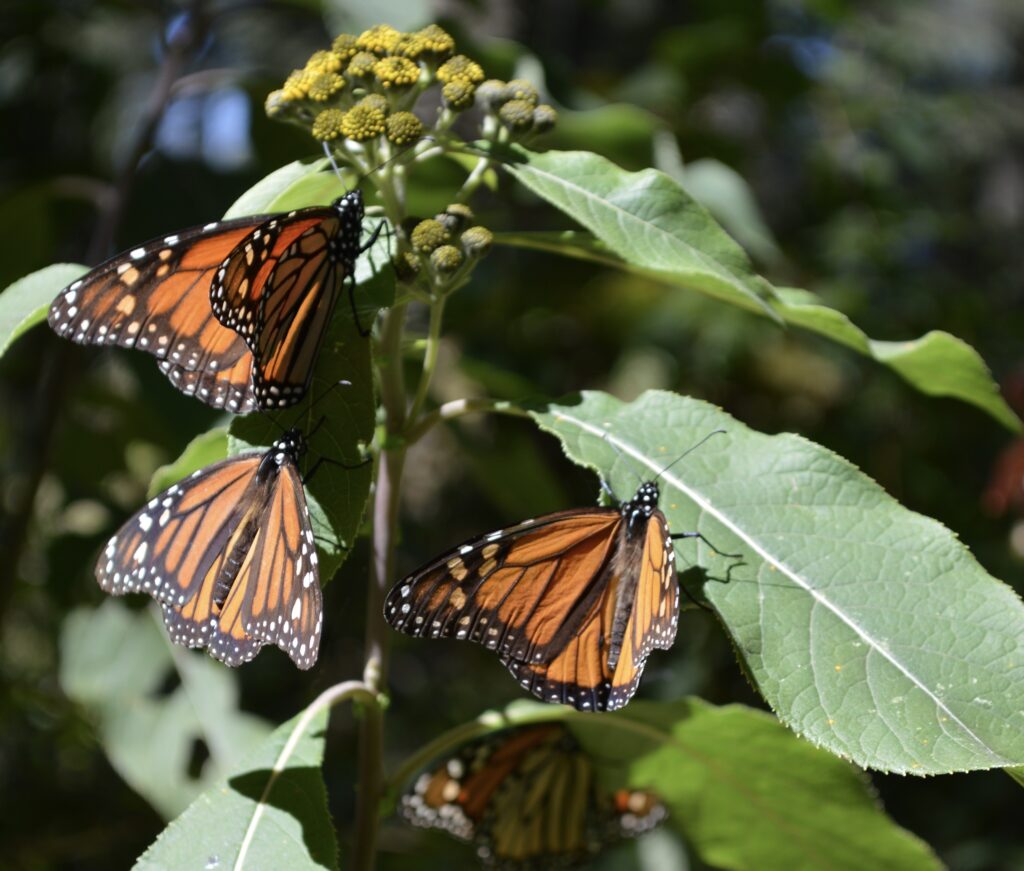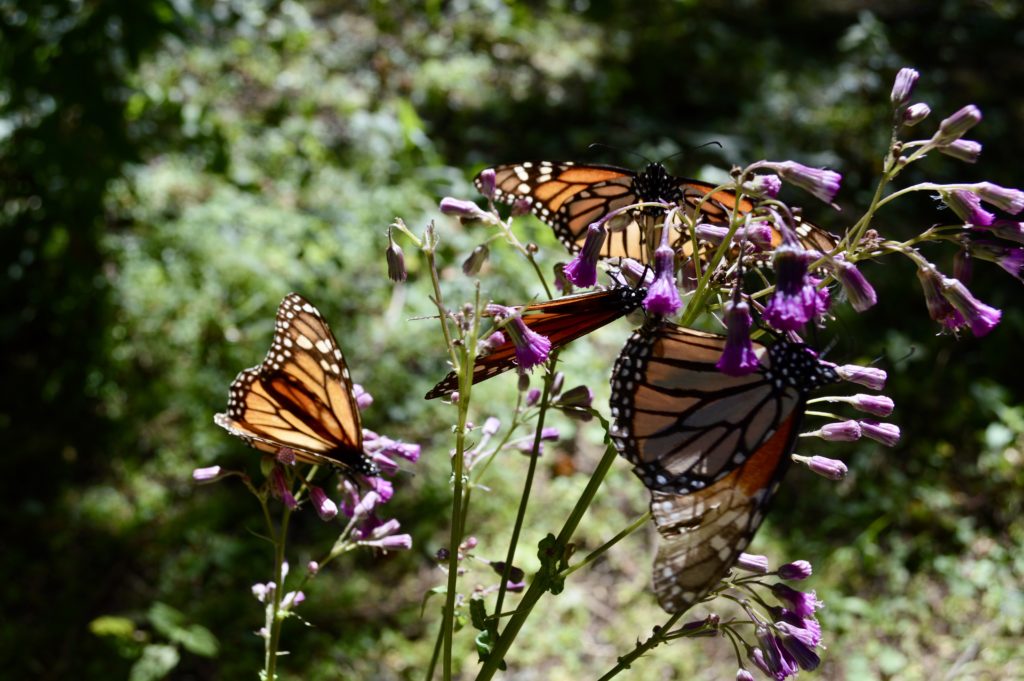Recent news reports tell us the monarch butterflies have been added to international list of threatened species. Anne Dimon writes about her visit to the El Rosario, Mexico, the winter sanctuary of the monarch butterflies.

One moment there is silence, then a great rustle as the world seems to erupt in a
mosaic of orange and yellow. A Disneyesque whirling and twirling ballet of color as,
seemingly, millions of monarch butterflies float and dip and soar and dart around
their winter sanctuary of El Rosario, here in the State of Michoacán in Western Mexico.
It may take up to five generations of monarchs to complete this annual migration to El Rosario, a cycle of
about 3,000 arduous miles and one of the longest migrations on the planet.
The Road to Monarch Country
Morelia, a university town and the capital of Michoacán located a three-hour
drive southwest of Mexico City, I meet up with Carlos Alanis, the owner of the locally-run tour company Mich Mex Guides. Together we set out by car for a day-long
journey along the winding road from Morelia to El Rosario in Monarch Country

In the State of Michoacán, there are about 50,000 acres of protected area spread
over three sanctuaries open to tourism. The largest of the three and the ones most
visited by tourists is El Rosario, and that is where we are headed today.
From the town of Anguagao to El Rosario, it’s a half-hour’s drive up a cobblestone
road, so bumpy I can barely take legible notes. At one point, our car is forced to a
stop by a heavy green rope strung across a section of the road bordered by a cluster
of small homes. An elderly and toothless woman in a green shawl draped over a red
dress asks for a toll of 30 pesos (about $2.30 USD). We hand over the pesos and she
dismissively waves us on. With so many vehicles passing by their humble homes
daily during monarch season, I can’t help but admire this woman’s entrepreneurial
spirit.
Along the way we pass several villages, cornfields and avocado farms with young
plants protected with bits of white fabric that flutter in the wind and seem to wave
as we pass. As the road weaves through the countryside, Alanis uses the drive time
to stitch together stories about a land once occupied by the proud and powerful
Purépechas peoples, with facts about the monarchs.

Our guide explains that it takes the butterflies about two months to fly from the
Canadian Great Lakes region down toward Texas and into Michoacán. They embark
on the journey with the onset of cooler September weather, arriving in Michoacán in
late October and early November. Guided by sunlight and their sense of smell (the
scent of dead butterflies in the sanctuaries acts as a beacon), they glide south on the
wind – flying during the day, resting at night, flying so low that in some areas drivers
are warned to watch out for monarchs, then sometimes flying so high that even
commercial pilots have reported seeing them. Truly incredible! I never thought I
would feel so completely awestruck by the comings and goings of the common
butterfly but this natural phenomenon proved mesmerizing and otherworldly.
The monarchs mate in Mexico between February and March, in a ritual that can take
about eight hours, and then the male of the species dies. “He passes on all the fats,
vitamins and minerals accumulated over his life to the female,” explains Alanis. “The
males gives the female his life,” because she needs to be strong enough to travel
north to the Texas milkweed fields to lay the eggs for the generation that will
continue the cycle as they complete the journey north. Once the females lay their
eggs, they too will die, says Carlos. The fourth generation born over the summer will
fly back south as the fall brings the cooler weather.
The Meditative Monarch Sanctuary of El Rosario
We drive higher and higher before entering El Rosario. For those who don’t want to
make the climb up to the sanctuary, there are horses available for rent. Regulations
also demand that we have a local guide who we are encouraged to tip. (At the time of my visit, fees to enter El Rosario were roughly $3.40 USD per person and horse rental prices were some 80 pesos – about $6 USD.)
I lead an energetic pace as we set out, but in no time, I’m told to slow down. The
altitude soon tells me why. We’re all breathing heavily. The slow, steady climb
straight up to the sanctuary takes about 30 minutes, longer for those in less than
good physical condition. Weekends, particularly long weekends, find El Rosario
especially crowded but today, there are few visitors and the only sounds that
accompany us are the chirping of birds, our breathing and the patter of soft soles on
concrete steeps. The air is fresh with a sweet scent of pine and the forest provides
natural air-conditioning from the mid-day Mexican sun.
We continue the ascent along a well-trodden, dusty path networked with roots and
scattered rocks. About three quarters of the way up we start to see butterflies – just
a few here and there – almost as if they have been sent out as ushers to escort us
further up toward the sanctuary. As the mid-day sun begins to warm the day, the
butterflies begin to venture out from their pine tree perches. And, the further up we
go, the greater number of butterflies.
Suddenly, the sky is flush with monarchs. Whirling, twirling around me like an
impressionist painting come to life. Bits of orange and white soaring, dipping and
pirouetting. A pas de deux here, a dance of six there and, over to one side, an aerial
ballet with a cast of millions. And, the monarchs are not just in the air but on the
ground – feeding on salt and moisture – so many, you have to watch your step. They
are also alighting on plants, wings spread like solar panels to absorb the rays of the
sun. Many more cling to the pine trees like so many orange leaves, giving the
greenery a soft pinkish hue. “Right now there are over 1,000 trees covered with
butterflies – 80 to 100 million of them,” Carlos estimates. “They have been coming
here for thousands of years and November to March continues to be the best time to
see them.”

What draws the monarchs to Michoacán? Alanis says it’s primarily the Oyamel
forest. Reaching upwards to the heavens like cathedral spires, the trees have short
pine needles that “make it easier for the monarch to grab and stay there,” he says.
They cling to these short-needles and hang in groups from the branches like
inverted bouquets to protect themselves from wind, cold and rain, and predator
birds such as oriole and grosbeak that also make the forest their winter home.
“If God exists, he’s got to be around here,” says guide Mario Bernal Cruz, here with
another group. And, in this “cathedral of nature,” visitors respect the rules:
speaking in hushed voices and taking photos without flash because the butterflies,
we learn, have no eyelids.
Among the many other visitors I stand quietly absorbing the scene in a solemn
communion with nature. I’m simultaneously sad to think that both the male and
female of species must die immediately for the next generation to live and overcome
by the beauty of the moment. There’s a prevailing sense of peace and quiet – almost
a religious experience – and if nature heals then certainly it must do so here in El
Rosario, a sanctuary for Monarch Butterflies.




